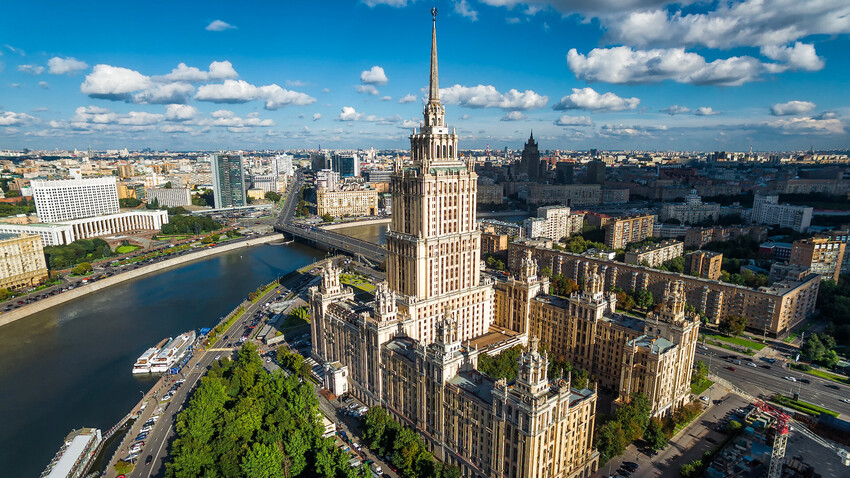
Address: Kutuzovsky Avenue 2/1.
Years of construction: 1953-1957
What’s inside: Radisson Royal Hotel Moscow and two residential sections
Since the Hotel Ukraina was the last of the series of ‘Seven Sisters’ high-rise buildings, engineers and architects were able to take into account all the previous design mistakes. However, even with this in mind, they had to resort to various tricks to ensure that the building was built without any disastrous ensuing consequences.
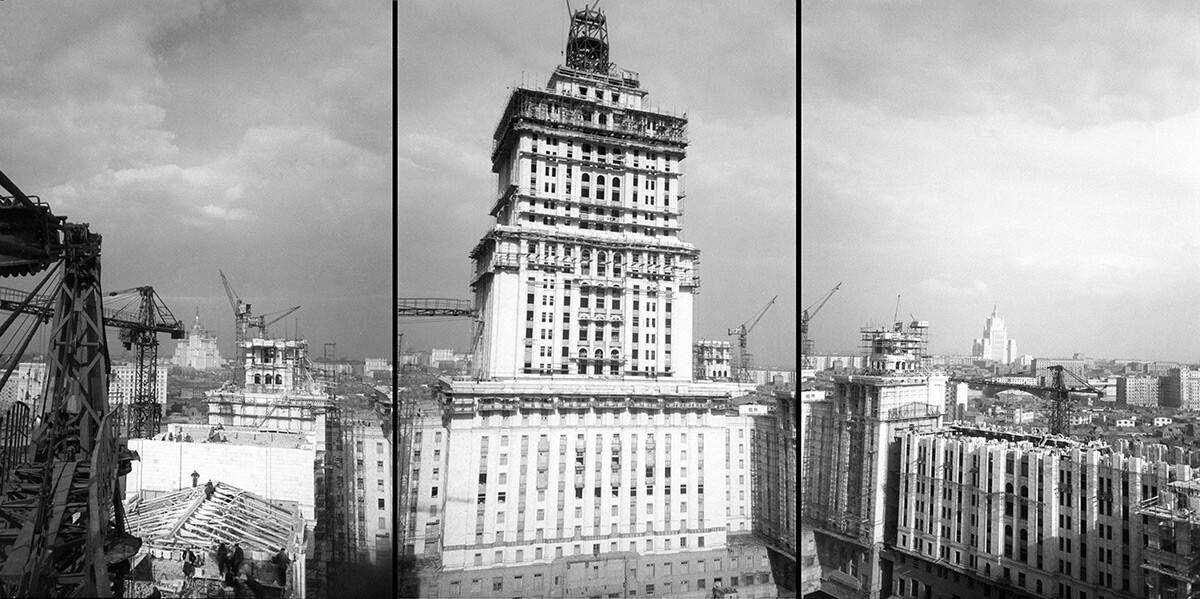
The fact is that the construction area used to be almost the outskirts of the city, where there were only barracks, and the land on which the construction was to appear - a swamp, where the dug foundation pits were immediately filled with water. However, Stalin did not care about such difficulties, he only wanted his ambitious project to quickly come true. Besides, he believed that the development of a new exemplary district had to begin with such a grand building as a skyscraper.
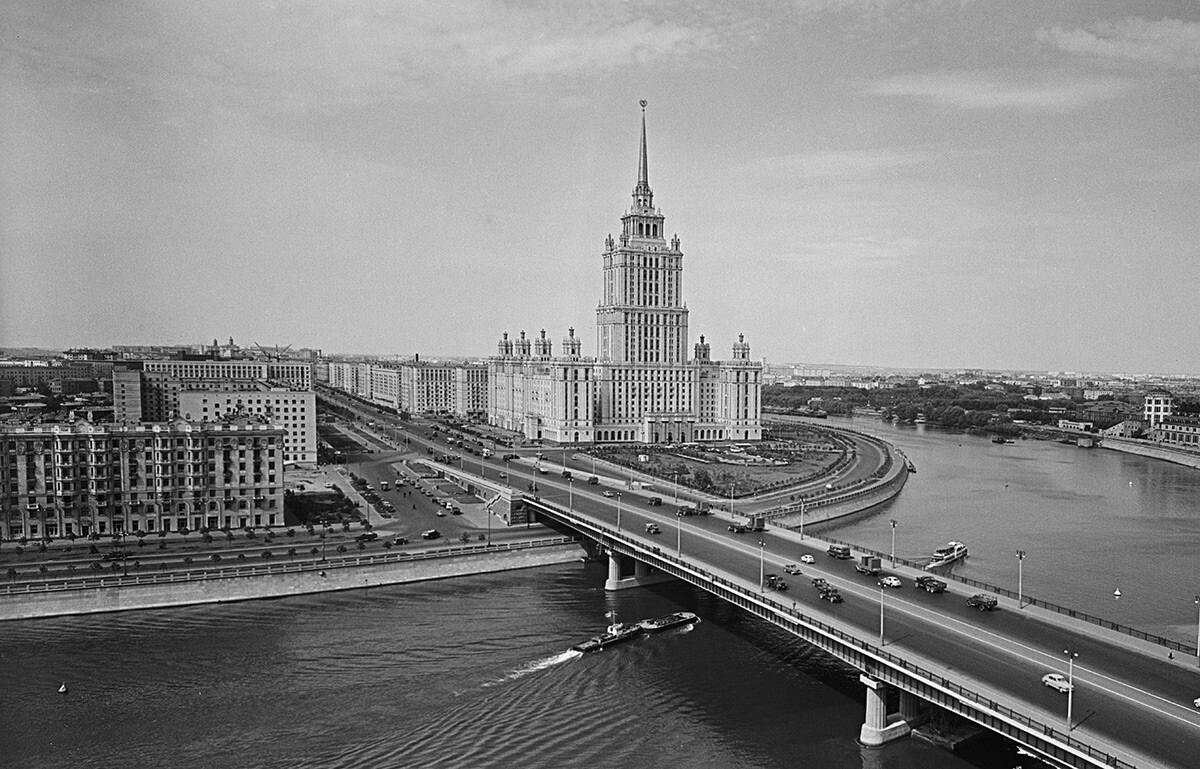
The project of architects Arkady Mordvinov, Vyacheslav Oltarzhevsky and Pavel Krasilnikov was taken as a basis. The first two already had a lot of experience and authority: Mordvinov’s career record included buildings on Tverskaya Street (the main street of Moscow), Leninsky and Komsomolsky avenues, while Oltarzhevsky was preparing the first project of the All-Russian Exhibition of Achievements of National Economy (however, it was later abandoned, and the architect himself was sent into exile).
The Stalinist Empire style building itself is 206 meters high, 73 of which is the length of the spire on the top. Oltarzhevsky, one of the authors of the hotel project, said that it was “a monument to the grandeur of the Stalin era”. This was expressed literally in everything: from the architectural style with its massiveness and a lot of decorative elements, to the use of the most expensive materials for construction - granite, marble and ceramic tiles.
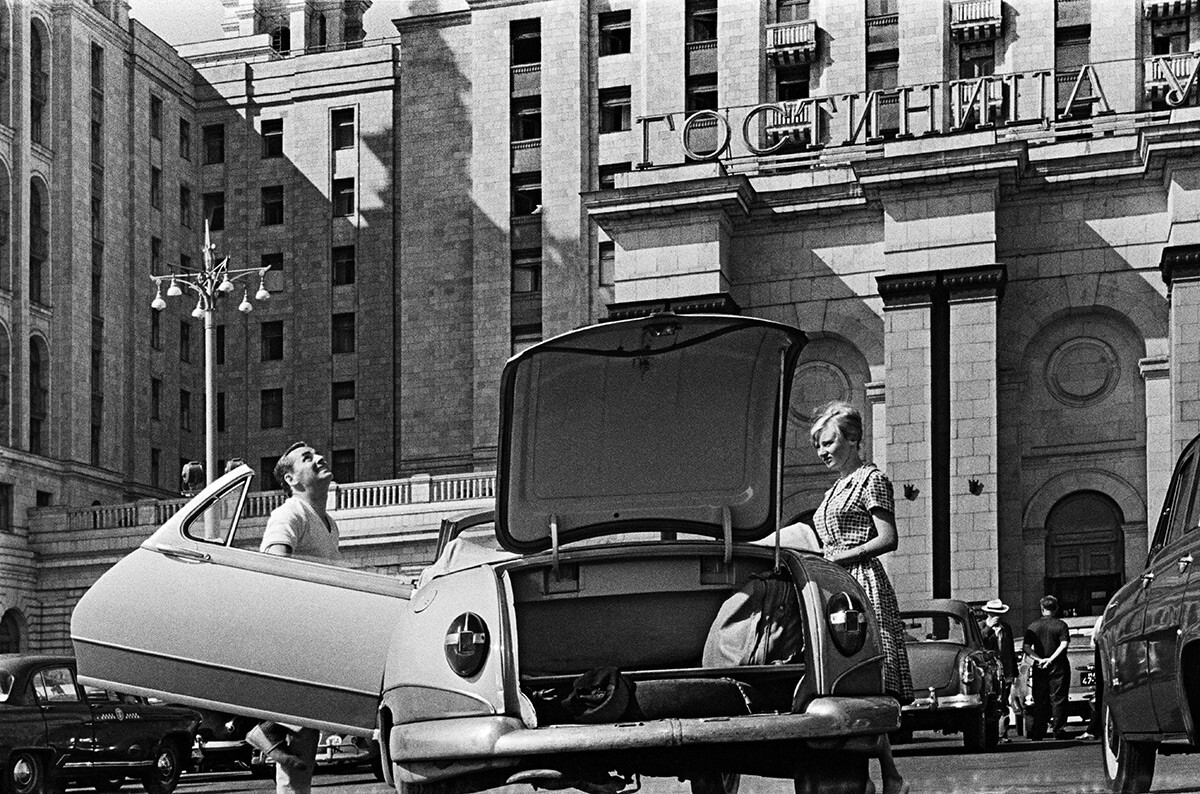
The very name of the hotel appeared thanks to Nikita Khrushchev after the construction was kicked off. The first secretary of the CPSU Central Committee decided to present the Crimean peninsula to the neighbors in honor of the 300th anniversary of the unification of Russia and Ukraine and, as a final touch, to name the most prestigious hotel of the capital in honor of the Ukrainian SSR.
Not all sections of the high-rise were occupied by the hotel: the side buildings were equipped as residential apartments (there were 255 of them). But, it was the hotel that brought the building world fame.
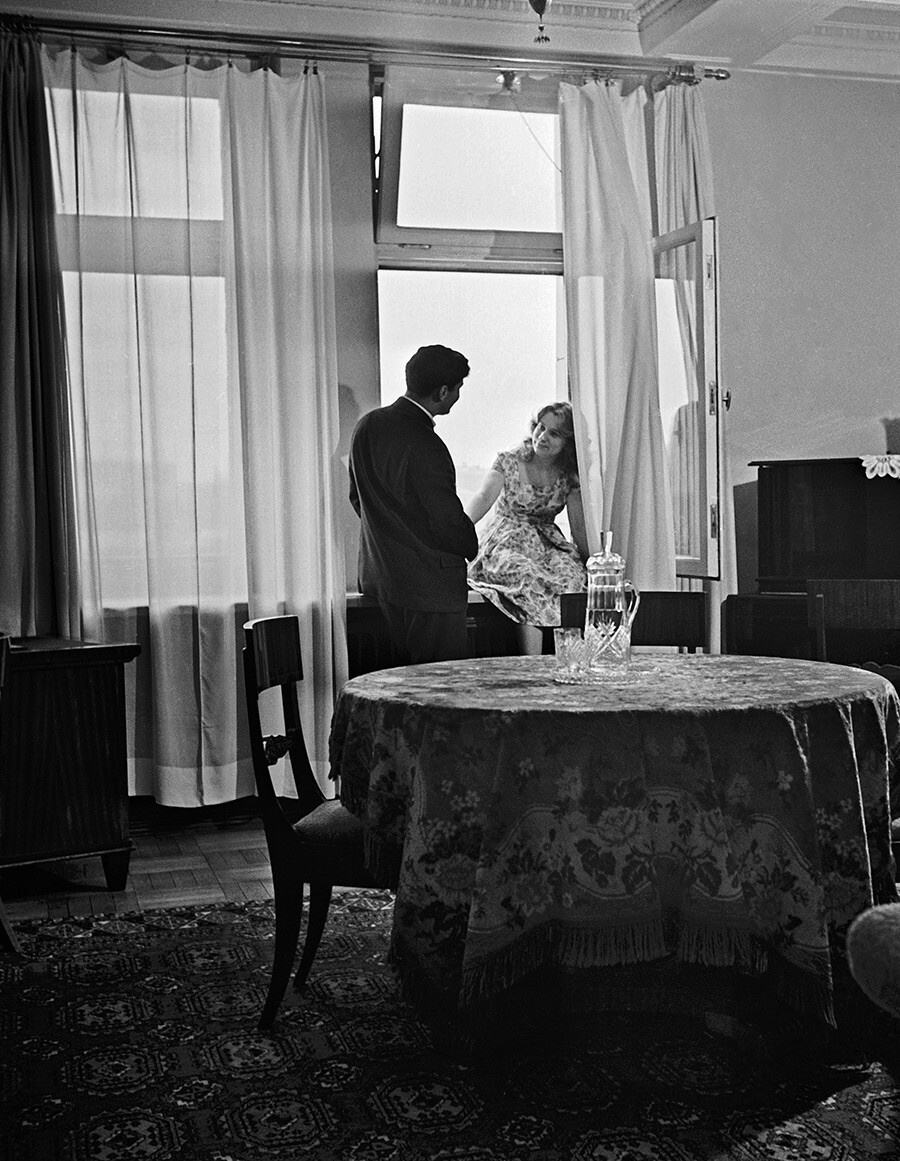
At the time of its opening in 1957, the hotel was the largest in Europe with 1,026 rooms. It was originally built for foreigners. The building itself contained almost everything a tourist would need: a telegraph office, a savings bank and stores. On the second floor, there was a winter garden with a fountain and, on the upper floors of the lobby, there was a cafe for guests offering a panoramic view of the city. Only the most high-ranking guests of the country were put up in the Hotel Ukraina and it was almost impossible for ordinary citizens to get an apartment in this prestigious building.
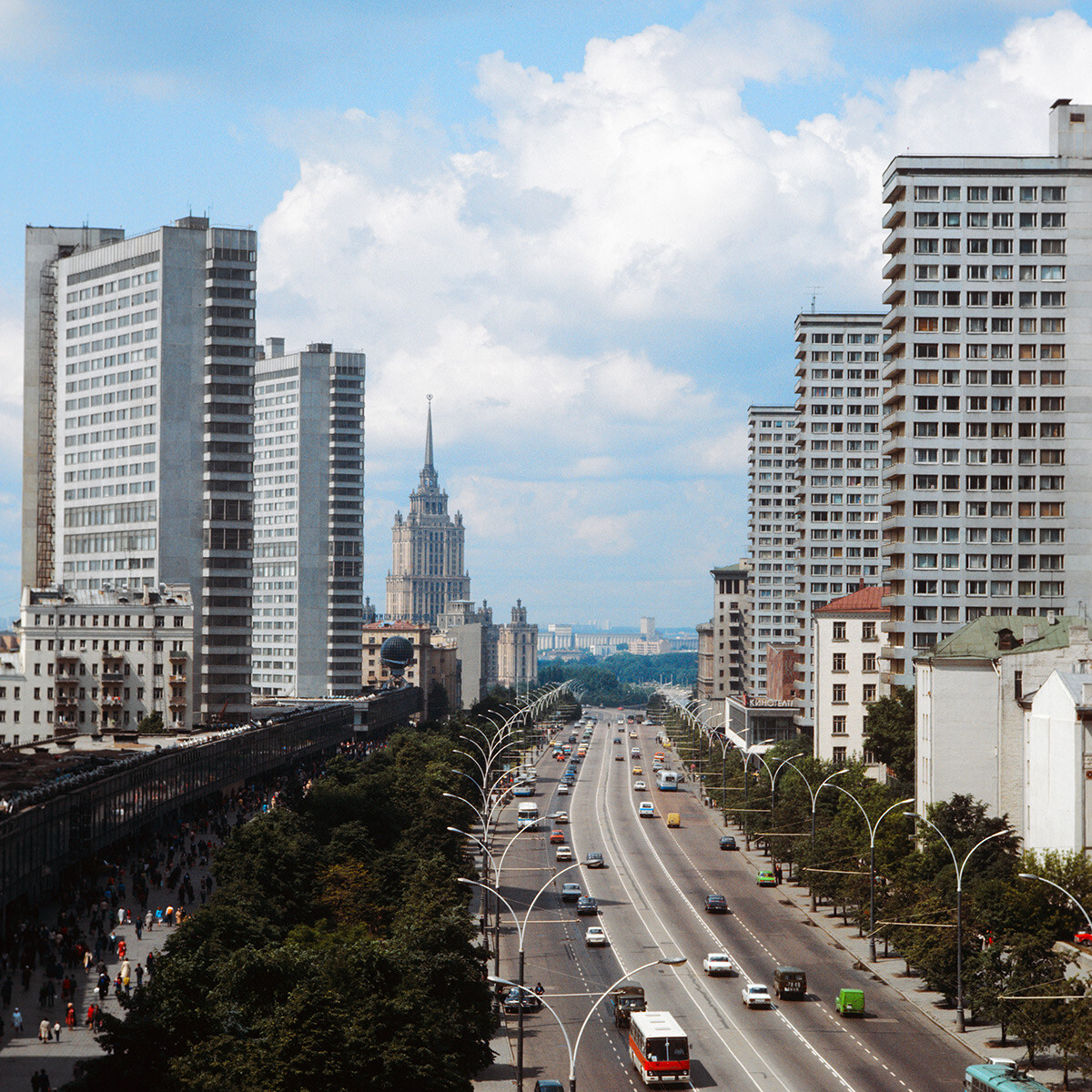
One of the most famous moments in the history of the hotel was when the bands of the 1989 Moscow International Peace Festival were put up there. Among the guests were famous rock bands and musicians like Bon Jovi, Cinderella, Mötley Crüe and Ozzy Osbourne. But their impressions of their stay were not as pleasant as they might have seemed at first glance. What was “a luxury” for Soviet people appeared to be absolutely unimpressive to Western guests.
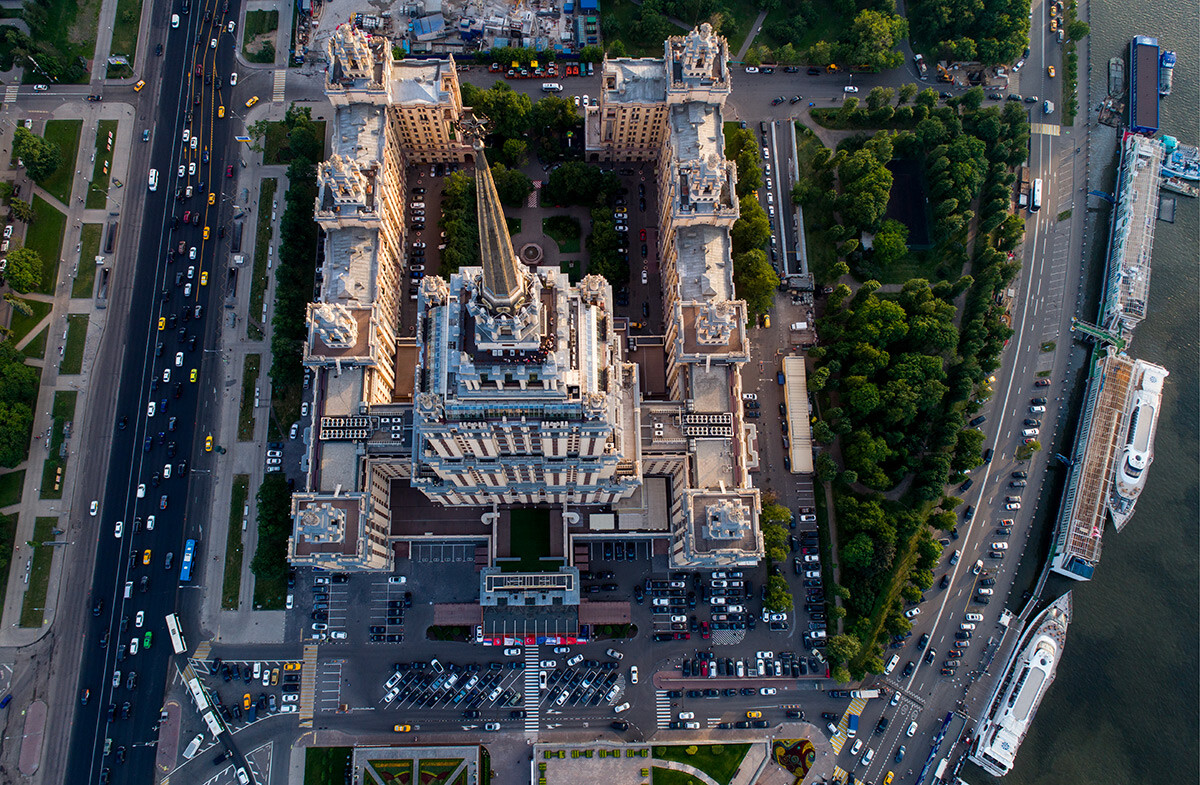
Singer Jon Bon Jovi even described the experience in his diary, noting that, by American standards, the four-star Hotel Ukraina was a plain starless motel:
“I was luckier than most: there was hot water in my apartment. I had a shower curtain there and no more than a couple or three friendly cockroaches running around. But, back in New York, my worn-out mattress would have been considered completely unusable.”
According to Stalin's original plan, Moscow was to have eight, not seven high-rises. There was a legend that the city authorities would not allow the building of the eighth one, as Moscow was built on seven hills (which is actually not true, as we explain here). It turns out that there simply wasn’t room for an eighth skyscraper.
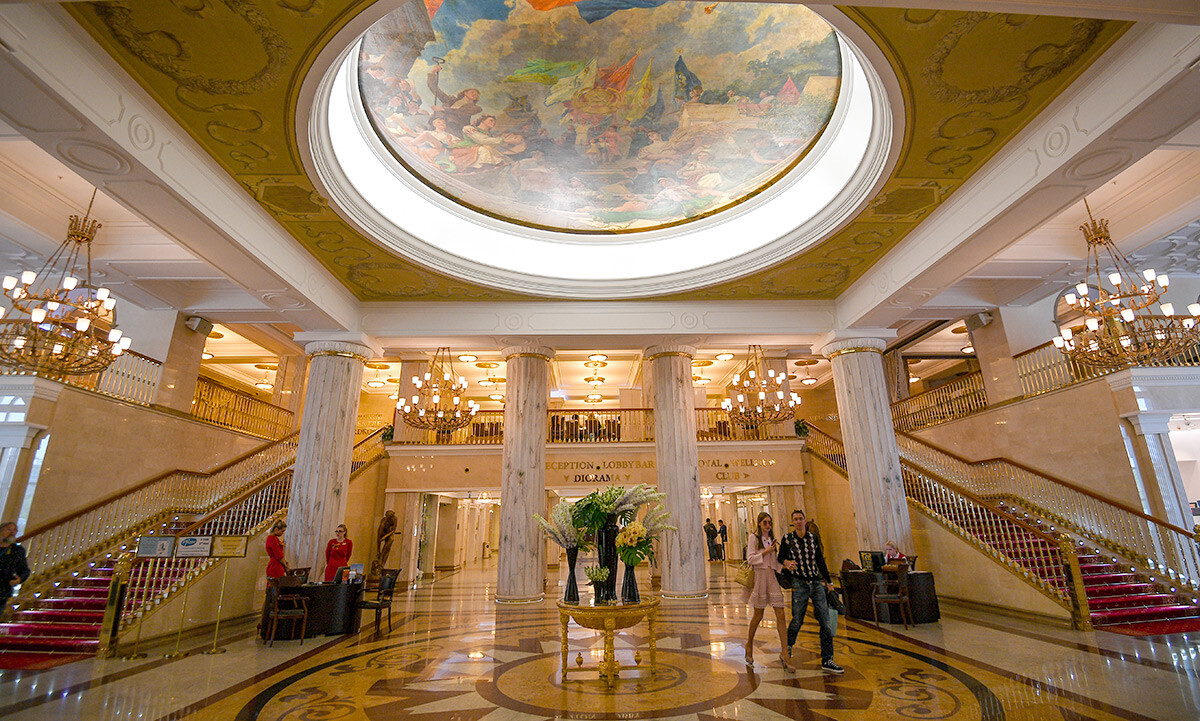
But, the truth is, in actual fact, more mundane. The ambitious and large-scale project of eight skyscrapers – symbols of the Stalin era – was needed, most of all, by Stalin himself. And, since the active construction of the Hotel Ukraina began right in the year of the leader’s death, in 1953, there was no more talk of constructing the eighth building. Nikita Khrushchev, first secretary of the CPSU Central Committee and Stalin’s successor, was not happy with his predecessor’s architectural ambitions and declared war on the “Stalinist style”, hastening the plan to replace monumentalism with functionalism: in architecture, as in other spheres, they put function at the center of everything and declared all excesses to be nothing more than bad taste.
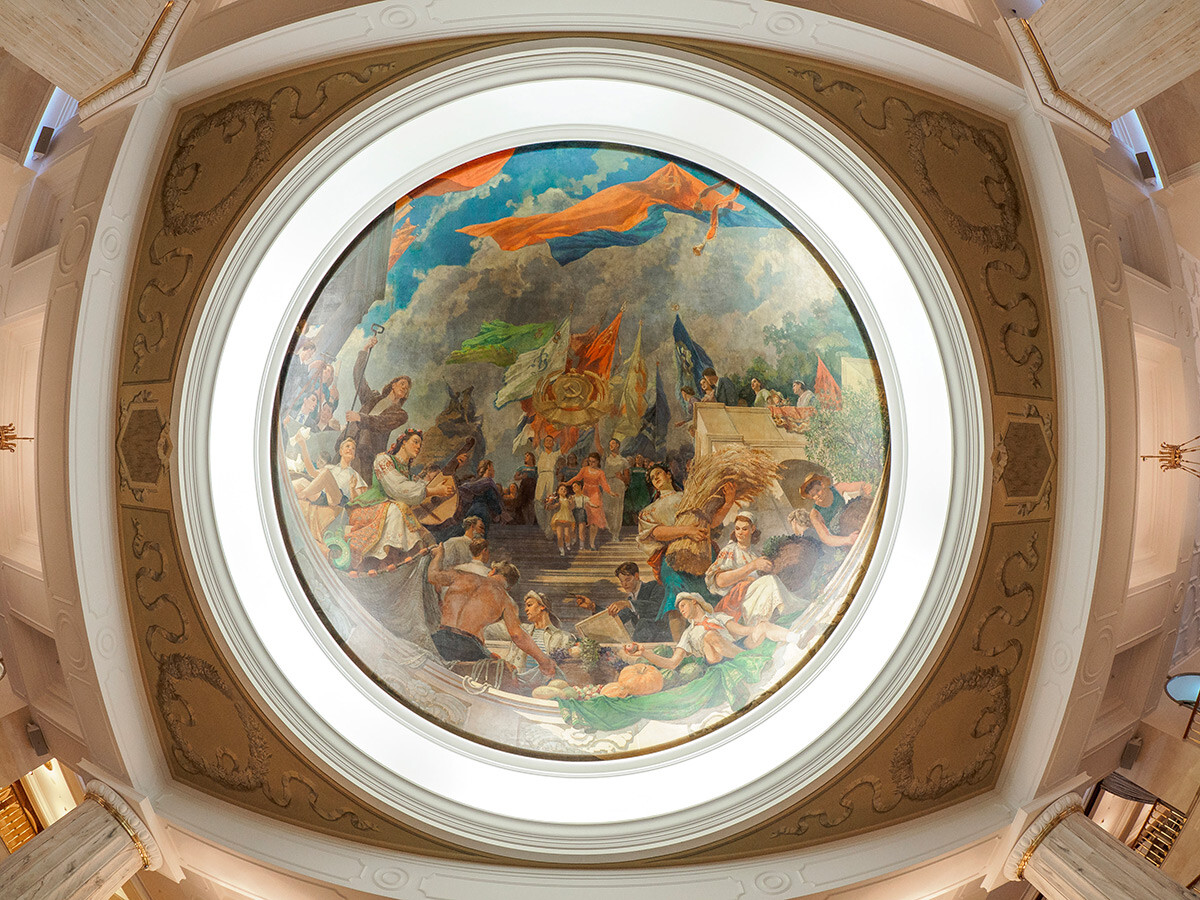
In 1997, the first attempt was made to attract private investors to the hotel maintenance. The Moscow government signed a contract with Swiss company ‘First Hotel Service Management’, but this cooperation was limited to only minor cosmetic repairs and facade washing.
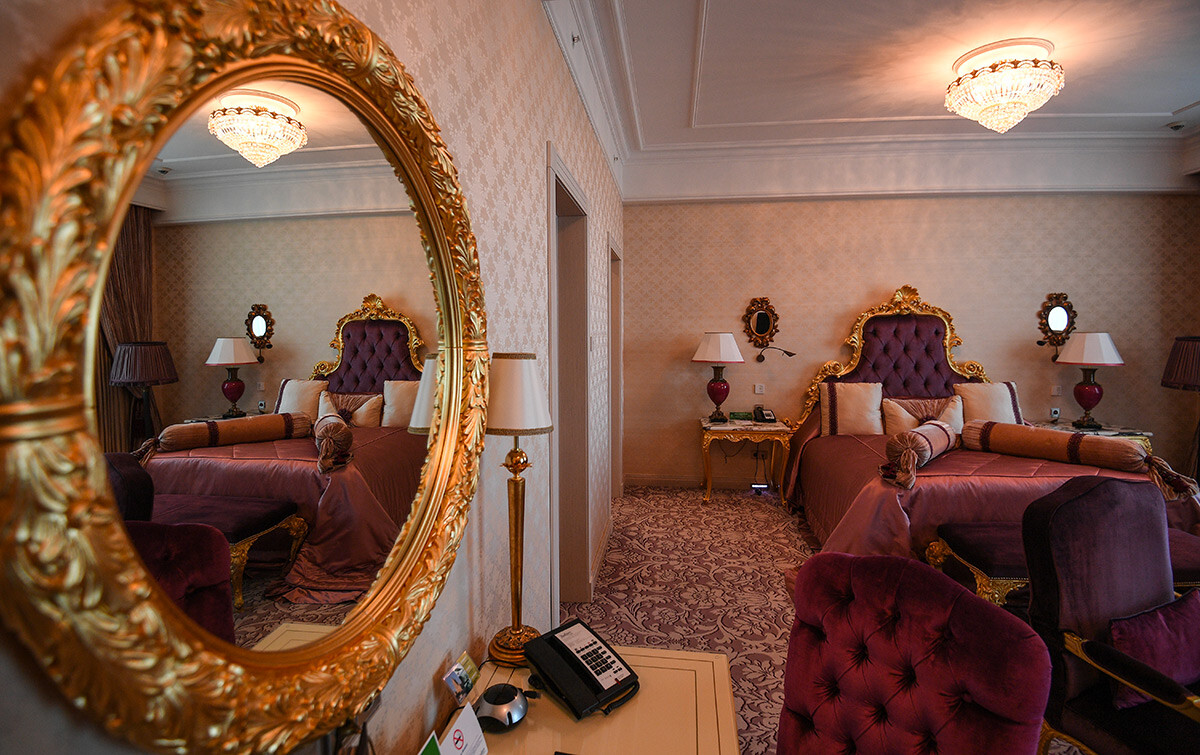
More sweeping changes occurred when the was acquired by billionaire property investor God Nisanov for £59 million during an auction in 2005. Shortly after the purchase, a reconstruction of the building began, as a result of which, the number of rooms was almost halved (to 505 rooms), but the historical appearance of many public spaces and lobbies was preserved, including 1,200 paintings by Soviet artists. The hotel officially became part of the Radisson hotel chain, but, formally, the owners decided to keep the historical name. Currently, the minimum price per night on the hotel’s website is 13,500 rubles (approx. $150). And anyone can access the famous building now, but, as always with hotels, on condition that you are a guest of the hotel or are dining in one of the restaurants!
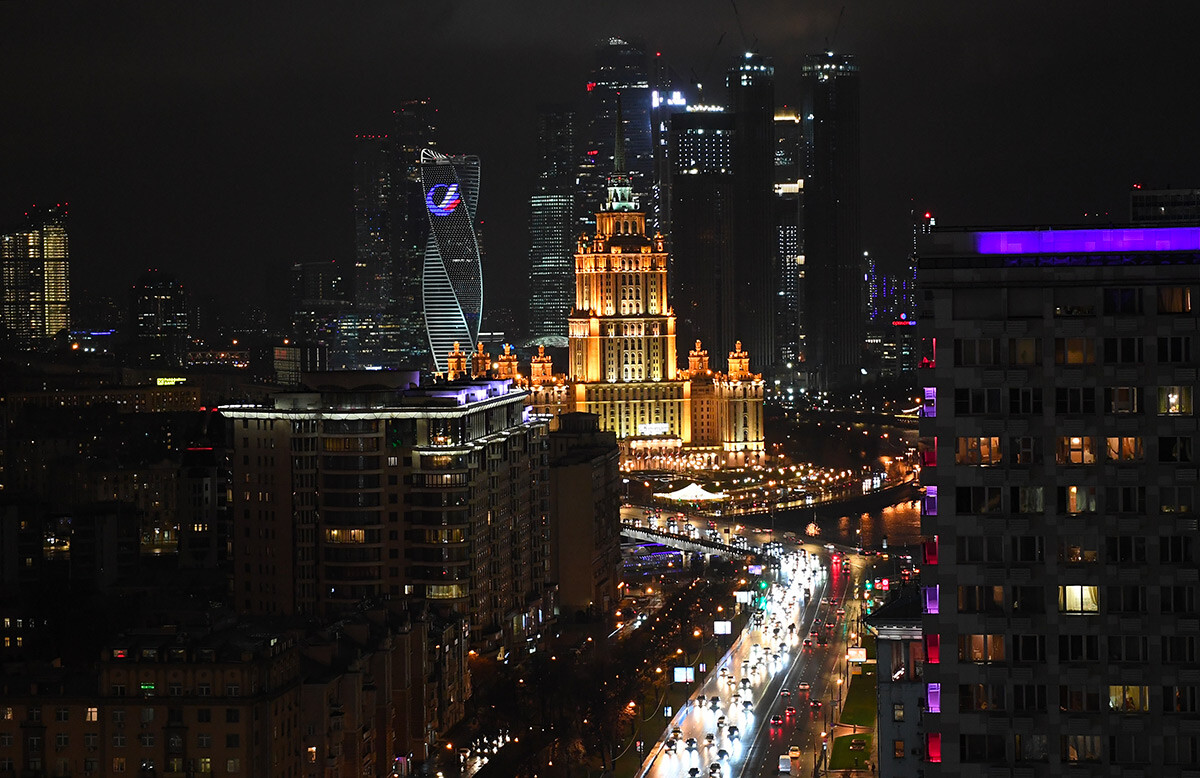
Select apartments are also for sale: the average cost of a three-bedroom apartment in the residential section is about 152 million rubles (approx. $1.68 million).
If using any of Russia Beyond's content, partly or in full, always provide an active hyperlink to the original material.
Subscribe
to our newsletter!
Get the week's best stories straight to your inbox